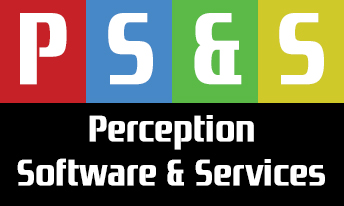
Audience and content are two sides of the same publishing coin, yet for many publishers, especially small and medium sized ones with limited resources, they often sit in splendid isolation.
It’s not uncommon to have a CMS – often built on WordPress or a homegrown platform – and a circulation database operating completely independently, meaning that potentially gold dust information about who reads what is unavailable.
In years to come, publishers will look back at this period and wonder how their predecessors thought they could run a business working in the dark.
Try and imagine a comparable situation in another industry, car manufacturing for instance. Nissan perhaps.
Two key departments are ‘Production’ and ‘Sales’. Production needs to know how many of each model they are selling so they can adjust production levels to match demand and Sales needs to know what models they will have available to sell.
Now imagine that Head Office has suddenly decided that communication between the two departments should cease. They should not know what the other is doing. Impossible, right?
Similarly, the central pillars of publishing – content, audience, advertising – should be integrated, says Andy Kirk, MD of publishing services company Perception SaS, which provides solutions in each of these areas which can stand alone, but, he says, the full power is only unleashed when fully integrated.
It’s worth remembering that integration is not rocket science. At its core, it’s incredibly simple. You hold certain information about each article and you hold certain information about each visitor; when that visitor logs into the site and reads that article, that information is captured and stored and can be analysed in depth.
This process then gets repeated for every article published and over time, you build a treasure trove of valuable actionable data which should inform and direct all your publishing activities.
You are no longer making assumptions and guesstimates; you are dealing in facts. Sometimes what you find out might alarm you – the people you thought were your key demographic hardly ever visit your site – but how better is it to know than not to know! You can then do something about it.
If the concept is simple and the rewards are so obvious, why, I ask Andy, does every publisher not do it now?
The answer lies primarily with creaking legacy content management systems which have evolved over the years with a bolt-on here and a plug-in there to a point where they can just about get the job done, but which are incredibly fragile constructs and are almost impossible to integrate.
The good news, says Andy, is that fit-for-purpose systems are readily available if publishers have the will to migrate to them.
So, I ask him, for a publisher unsure whether to make the leap from standalone to integrated, what would you tell them the benefits of integrating their CMS and audience and advertising systems are:
1. Better editorial
Knowing the number of people who read an article is a very one-dimensional piece of information; but knowing who reads an article allows your editorial teams to make informed decision about the quality – or otherwise – of their output and to do something about it. Full and transparent knowledge about who your visitors are and what they do on your site leads to a much improved editorial product.
2. Stronger advertising sales message
As with editorial, it’s all about ‘who’.
“Five thousand people saw my banner ad, but who on earth were they?”, fumes your frustrated advertiser.
Not being able to provide that information is what is preventing publishers from both selling more inventory and increasing prices.
Imagine the transformative effect on your sales conversations if your sales teams can start providing the information that advertisers actually want and properly demonstrate the RoI of their spend with you.
3. Better commercial return
Being able to properly identify visitors to your website enables you to sell more stuff to them, in the full knowledge of what they have already purchased from you.
There is nothing more annoying for a visitor being confronted with a sales message for something they’ve already bought. With properly integrated systems, that becomes a thing of the past.
4. Better user experience
Knowing who your readers are and what they like to read allows you to personalise your offering, to serve up more suitable homepages or offer them more targeted newsletters and advertising.
5. Better efficiency
Most publishers spend more time than they would like to admit, trying to make sense of information from siloed systems. Allowing information to flow freely between your content, audience and advertising platforms will allow management to pull out the precise information they want when they need it, without the need for time consuming manual collation.
6. Future enabled
One thing many publishers agree on, even if they have only made tentative steps towards it themselves, is that artificial intelligence (AI) is the future. AI will become increasingly important for publishers in facilitating marketing automation and increasing their understanding of visitor behaviour. AI relies on rich data. If you’re not collecting the data, or only collecting low-value data, then you will not be able to ever realise the full potential of AI. Even if AI might seem on the distant horizon at the moment, if you start collecting the data now, through proper integration of your publishing platforms, then you will be well positioned to benefit from AI when the time comes.
When choosing a content management system, there are lots of functionality tick boxes you need to check. They must enable clean workflows, efficient and rapid publishing to well-designed and mobile optimised websites.
All fundamental, says Andy, but one tick box many publishers forget to check is ‘integration’. All other things being equal, it will be the integration between content, audience and advertising that will ensure a sustainable future for publishing.

About us
Perception SaS is a publishing software company, based in East Sussex, specialising in providing affordable solutions for independent magazine owners. With our cloud based publishing services, you can take control of your publishing business from anywhere at any time.
Our solutions include content management, audience management and advertising management, each of which can operate on a standalone basis or, for best results, can be fully integrated.
Perception SaS
The Granary, Framfield Road, Buxted, Uckfield, East Sussex, TN22 4DF
Andy Kirk, Managing Partner
Tel: 01825 701 520
Email: andy@perception-sas.com











